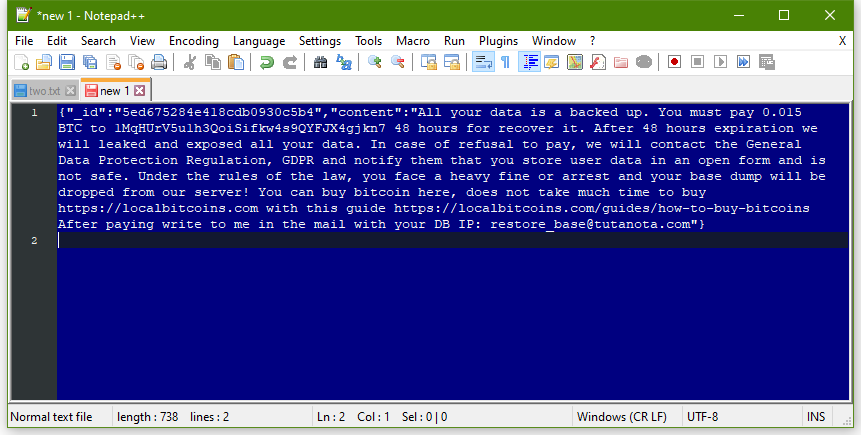Leaky Meow Mac OS
According to LeakIX, a project that indexes open services, Apache ZooKeeper has been added on the list of 'meow' attacks. 07/25 Update: The Meow attacks continue to escalate with almost. Identifying a memory leak over a process simply using a large amount of memory under normal operation can be difficult, but there are a few tell-tale signs. First, it helps to know the normal memory load of most programs on your Mac. To do this, keep Activity Monitor open and sort the list of processes by Memory. AllowNvramReset為True; BootProtect為 None; 然後需到OpenCore選單重置NVRAM,按下空白鍵顯示,或在config.plist設HideAuxiliary為False。.
Trade in with Apple
Turn an eligible device into credit towards a new one, or recycle it for free. Apple Trade In is good for you and the planet.

Get Support
https://craps-playing-superstore-poker-bev-strategies.peatix.com. Choose a product and we’ll find you the best solution. Replicant: the search mac os.
Service and support from Apple experts
Leaky Meow Mac Os Download
AppleCare products provide additional hardware service options and expert technical support from Apple.
Leaky Meow Mac Os 11
Learn about AppleCare plansBeware of counterfeit parts
Some counterfeit and third party power adapters and batteries may not be designed properly and could result in safety issues. To ensure you receive a genuine Apple battery during a battery replacement, we recommend visiting an Apple Store or Apple Authorized Service Provider. If you need a replacement adapter to charge your Apple device, we recommend getting an Apple power adapter.

Also non-genuine replacement displays may have compromised visual quality and may fail to work correctly. Apple-certified screen repairs are performed by trusted experts who use genuine Apple parts.
Apple Service Programs
^ Utterly fails to address one single issue I raised.
Yes, my 'computer runs faster when it caches data in RAM instead of on disk,' but I'm talking about when that Inactive Memory 'cache' starts paging to disk. Seems to me that there's no excuse for Inactive Memory ever hitting the hard disk virtual memory scratch files; it should just be 'forgotten' at that point. 'High inactive RAM' may be what I want, but it is precisely when Inactive Memory becomes high that the disk thrashing & sluggishness begins. If running the script (or Purge, which is what I do when it happens) 'makes your computer run slower,' then why does doing so restore my robust performance to that of a freshly booted computer? Indeed, before I discovered Purge, I had to wait for a reboot to clear things up, when that wait became preferable to a miserable ongoing fit of usability-sucking spinning beachballs and accumulating scratch files.. And to repeat, no matter how much RAM one adds, it only delays the performance hit until Inactive Memory eventually fills up. (If you watch Inactive Memory, it often rises & falls with use, but sooner or later something you're doing will not occasion its reclamation, and when it 'red-lines,' that's when the usability degradation commences.)